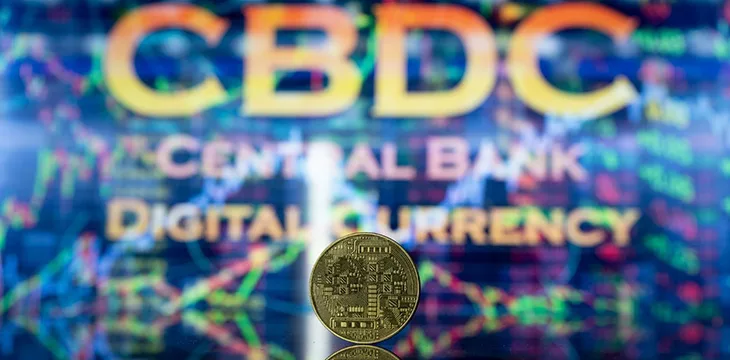|
Getting your Trinity Audio player ready...
|
Late last week, the Managing Director of the International Monetary Fund (IMF), Kristalina Georgieva, told the world to “buckle up” and that “time is not our friend” when discussing the future of digital currencies and central bank digital currencies (CBDCs).
During the panel, Georgieva spoke positively about tokenization but slammed so-called ‘crypto’ as the Wild West, highlighting its bad reputation and association with criminality, tax evasion, violation of currency controls, and other illicit activity.
Speaking of the role of blockchains in how digital currencies will work, the IMF head said they’ll need to be “cheap, stable, and trusted.” She further elaborated that digital currencies need to be interoperable and capable of contracts. Lastly, she said they will require CBDCs to go for assets.
There’s only one blockchain capable of running CBDCs
For years, bank chiefs and bigwigs in the financial industry have been talking about tokenization, CBDCs, smart contracts, and the ledgers they’ll run on. All manner of experiments have been conducted, realizations made, and regulations penned to deal with the coming changes.
Yet, to date, few have made the leap to understanding that the sort of interoperability and cheap, trusted transactions they want to see will require everything on one stable protocol, or as Bitcoin inventor Satoshi Nakamoto put it, one global chain.
CoinGeek has explained many times that using multiple ledgers or blockchains comes at a cost. As well as security vulnerabilities when switching between ledgers via bridges, multiple ledgers reintroduced the need for trust and did away with the auditability and immutability associated with a single, scalable proof-of-work blockchain.
So far, only one blockchain has proven itself capable of underpinning the sort of system banking bosses like Georgieva imagine. BSV blockchain, the original Bitcoin protocol, is capable of scaling unboundedly, has a native script language to allow for smart contracts, and has fast, secure transactions for fractions of a cent. BSV is capable of true micro and nano payments in a way other blockchains are not.
Better yet, BSV blockchain was designed to be fully compliant with existing financial laws and regulations. As well as being auditable, thanks to its public nature, BSV allows for token recovery, doing away with the fear of losing digital assets due to hacks and digital heists. When all miners (nodes) are known, legal orders can be issued to them to append the ledger, returning digital assets such as CBDCs to their rightful owners.
While it’s encouraging to see powerful bankers and financial players move with urgency toward a more efficient, transparent world involving blockchain technology, digital assets, smart contracts, and micropayments, there’s still one piece missing: the realization that it will all run on a single scalable ledger.
Just as the internet emerged from a patchwork quilt of smaller networks, so too will the new financial network run on a single, stable protocol—BSV. It can be no other way.
To learn more about central bank digital currencies and some of the design decisions that need to be considered when creating and launching it, read nChain’s CBDC playbook.
Watch: Finding ways to use CBDC outside of digital currencies

 07-12-2025
07-12-2025 





